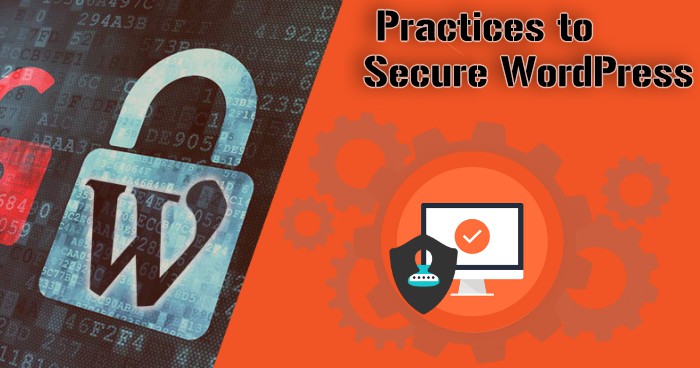WordPress is the most popular web publishing platform, in spite of that its websites are constantly under attack. Every day more than fifty thousand WordPress websites get hacked. Most of the attacks done by the hackers are automated, human attacks are done for few specific things like identity theft, confidential or get financially critical data. Hackers mostly use bots and botnets programs to find the vulnerabilities in the website. Most of the WordPress websites are hacked using botnets. The cybersecurity department of big organizations can help you out resolve it, you can contact and Hire WordPress Developer from Sydney if you want to keep your website secure.
Let’s check some practices that can help you keep our WordPress websites safe:
- Website Should Be Securely Hosted
This the most critical step, as it is the leading cause of security violations for the WordPress platform. There are chances that your account can be compromised, if a shared hosting provider does not maintain effective isolation between accounts. Therefore, choosing a trusted and reputable web-hosting service provider is necessary. It is advised to use SiteGround or BlueHost, as these are known to have security-focused features.
- Maintain And Update Core WordPress Platform And The Associated Themes And Plugins
WordPress should be updated to the new version, as the new version is launched. While you update the core WordPress, installation is the most obvious activity. WordPress provides automatic update features, which results in simpler maintenance at users end.
WordPress version number should be hidden. For hackers, it is an easy task to uncover the WordPress version, as the tag in the web site’s head section shows off current running version of your CMS.
Half of the attacks happen because of ill-protected plugins and themes, so security needs to be extended in this too. To solve this issue, you can eliminate unused or old plugins, check the source before installing the plugin from it, and do not download paid plugins for free.
- Secure User
Hacker can try to brute force their way into the backend of your website, through the WordPress URL that is public. A strong password should be used for logging into your website. Also, the password needs to be changed at periodic intervals. Use of the default username “Admin” is prohibited. Email ID should be used to log in, as they are trickier to predict. Two-factor authentication increases security level, so it is advisable to be used.
- Harden WordPress Database
Real-time backup of data is always the best option, if that is not possible then daily backup should be taken. There are many paid or free plugins that service with the backup facility. You can choose secure cloud offerings like Google Drive or Dropbox. Another important thing is that your WordPress tables prefix should be unique.
- Strengthen WordPress Administrator And Control Panel
The most targeted attacks are on users having admin or superuser privileges. Hence, their security shouldn’t be ignored. Two passwords should be provided to access the WordPress dashboard, one to restrict access to the login page and another to access the admin panel.
Hope the above security practices help you secure your WordPress website. If you want to have a more secure website, Hire WordPress Developer from Melbourne to help you get your website security tight.


























Leave a Reply